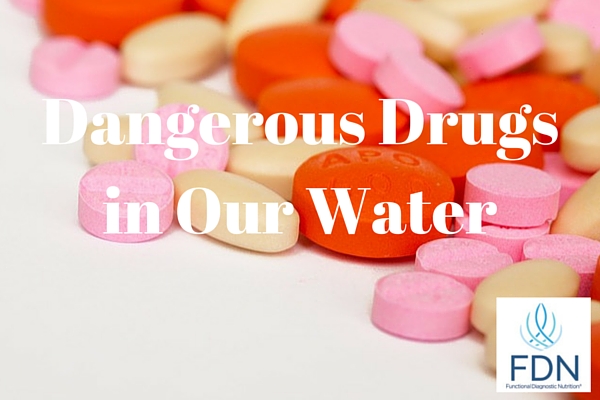Did you know that every time your clients take a drink of tap water, they’re taking drugs?
And It’s far more than just fluoride and chlorine that they are consuming.
A recent study has shown that there is widespread contamination in municipal water supplies caused by common pharmaceuticals. Not just floating around in the reservoirs, but in the actual water your clients are drinking, cooking with, and bathing in. And every time they connect with that water, they’re taking in low levels of drugs. Which drugs and how many across the US- well, no one is being directly forthcoming about that. But one thing is for sure, it’s a lot of different drugs, and more than anyone should be getting.
Researchers from the US Geological Survey and the Environmental Protection Agency tested the water from 25 water treatment plants around the US. They discovered 47 different pharmaceuticals in the “clean” water that had been treated in these plants. Water that was being sent into homes and used for drinking, cooking and bathing. Not one sample was free from contamination by pharmaceuticals. In fact, the average amount found in the samples was 8. One sample contained an alarming 41 different drugs!
Currently, the US government does not regulate drugs in drinking water. Furthermore, water treatment facilities don’t test for them or filter them out of the water supply.
Most common drugs found in the study:
- Antibiotics
- Antidepressants
- Muscle relaxers
- Anticoagulants
- Blood pressure drugs
- Antihistamines
- Hormones (from birth control pills)
If these drugs are so prevalent in municipal water supplies across the US, how are they getting there?
There are several common ways that drinking water supplies are being contaminated. The most common is through human urine or feces. When people take medications, the body absorbs a certain amount, and the remaining amount is excreted from the body through urine and feces. Sewage plants do not filter out the drugs before releasing wastewater out into the surrounding area where it can end up in municipal wells.
Some people flush unneeded medications down the toilet to dispose of them. Once again, these drugs do not get filtered out when going through sewage plant processing and wind up in tap water.
Other sources of contamination include seepage from landfills, waste from pharmaceutical manufacturing and runoff from farms that treat animals with certain drugs. All of these things can contaminate the drinking supply.
Ask the pharmaceutical industry whether the contamination of water supplies is a problem, and officials will tell you no. “Based on what we now know, I would say we find there’s little or no risk from pharmaceuticals in the environment to human health,” said microbiologist Thomas White, a consultant for the Pharmaceutical Research and Manufacturers of America.
Confidence about human safety is based largely on studies that poison lab animals with much higher amounts.
“I think it’s a shame that so much money is going into monitoring to figure out if these things are out there, and so little is being spent on human health,” said Snyder.
The toll on human health
There are far too many drugs that are being prescribed today. Those drugs along with many more toxins, end up hitting people a second time through the water supply. Antibiotic-resistant bacteria are breeding like never before. Because of this, water that is contaminated with so many medications causes a toll on the human body. Hormone containing medications can be especially problematic. Hormones are used by the body in small amounts and so even trace amounts can cause health issues.
And because no studies have been done on the long term affects of consuming drinking water that has been contaminated by pharmaceuticals, we have no way of knowing how it could be impacting those that may be sensitive to the drugs, such as the elderly, young children and growing fetuses.
A better option than tap water
When working with clients, it is important to help them understand the importance of avoiding regularly drinking tap water when possible. One of the best options is spring water, preferably in glass containers. Spring water contains essential trace minerals and is naturally filtered by the earth.








